So long, mosquitoes!
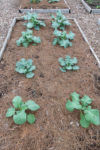
Well-established brassicas can generally withstand freezing weather
One of the reasons that the November vegetable garden is so wonderful is because most pests tend to fade away this time of year. The one I am happiest to see go is the mosquito. It’s hard to think of anything that sucks the joy out of being outside more than a single, determined mosquito. Good riddance. I hope their annoying buzz and bite is waning in your outdoor environment as well.
Add Flowers to Your November Vegetable Garden
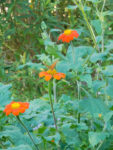
Make a note to plant tithonia seeds next summer.
The transition to cool season vegetables is well underway. November is a good time to think about adding color, beauty and fragrance to the garden with flowering annuals. As we begin to put away hoses and scale back irrigation for the winter season, snapdragons, pansies, violas, dianthus, alyssum and stock can be planted among cool-season vegetables and herbs where they will get watered along with the edibles. Sweet pea seed can be planted now in order to enjoy their delicious fragrance next spring. They are climbers so plant them along a fence or trellis where they can be left to grow undisturbed until spring.
While thinking ahead to 2021 you might want to add tithonia to your list for planting next summer. They are easy to grow from seed, tolerate hot and dry conditions and are a magnet for butterflies in the fall. Their vivid blooms are standouts in any garden.
November Gardening Checklist
Here is the November vegetable garden checklist:
Water
- Be sure to irrigate plantings during dry periods; vegetables under moisture stress are more susceptible to pest and disease.
Fertilize
- Feed vegetable plants with a water-soluble fertilizer every 2-3 weeks.
Plant
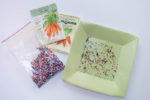
Mix carrot seeds with sand or candy sprinkles to help distribute them more evenly.
- Plant carrots in the garden or in a pot. Sprinkle the seeds on top of moist soil (or lay a strip of moist toilet paper over the soil so seeds are easier to see and space more evenly; toilet paper will gradually disintegrate). Cover seed lightly with potting soil or vermiculite and keep moist until seeds germinate.
- Plant lettuce, spinach, arugula, Swiss chard and other cool season greens. Once established these hearty vegetables can withstand cold weather.
Harvest
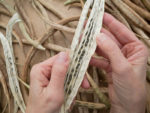
Seed from open-pollinated varieties of okra and beans can be collected and saved for next year’s garden.
- As the summer plantings wind down consider saving seeds from open-pollinated annual crops that don’t easily cross-pollinate, like okra and beans. Shell seeds from pods and allow to dry completely. Place in a paper envelope or glass jar and label with variety and date. Store in a cool dry location.
- Snip some fresh herbs to add vibrant flavor to salads dressings, sautéed vegetables, wraps, sandwiches and soups.
Pest Management
- Continue to inspect plants for caterpillars and spray with insecticide as needed. One way to avoid damage is to cover brassicas and greens with lightweight floating row cover that can be left on all winter.
Maintenance
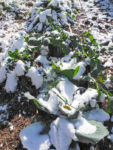
There is always a chance for freezing weather as we head toward December. Pay attention to the weather forecast and be prepared to protect – or say goodbye to – tender plants.
- Tidy up the garden, disconnect hoses and put away tools before cold weather arrives.
- Pull or cut down weeds before they go to seed. Remember: a year of seeds brings seven years of weeds!
- Monitor weather forecasts for freeze warnings and protect tender vegetables by covering with row cover, a sheet or even a box.
- If you decide to take a break for the winter season be sure to protect your valuable soil and put it to bed with a nice layer of mulch. Our local farmers will appreciate the extra business during your garden’s downtime.
Additional Resources
Recommended Vegetable Varieties for Travis County
Sustainable Food Center Farmers Markets

